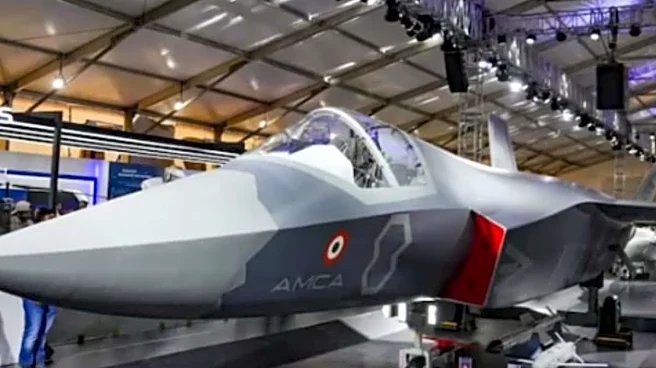India is making significant strides towards the development of its fifth-generation fighter jet, aiming to have it airborne as soon as possible. The Defence Research and Development Organisation (DRDO),
responsible for this ambitious project, has announced that all necessary technologies are ready ahead of schedule.
In a major move, the government has garnered interest from seven public and private sector companies to secure contracts for various tasks related to the fighter jet’s development. Two top panels have been formed to evaluate the capabilities of these companies expeditiously.
According to a report by Hindustan Times, the Aeronautical Development Agency (ADA) of DRDO invited expressions of interest (EOI) in June 2025, to which these companies responded. This initiative marks a significant step towards bolstering India’s indigenous defence capabilities.
The contenders include Hindustan Aeronautics Limited (HAL) in partnership with two small firms, Tata Advanced Systems Limited, Adani Defence and Aerospace, Larsen & Toubro (L&T) with Bharat Electronics Limited (BEL), BrahMos Aerospace Thiruvananthapuram Limited with Goodluck India, Axiscades Technologies, Bharat Forge Limited with BEML Limited, and Data Patterns.
Process Expected To Be Completed Within A Month
These companies are vying for contracts to construct five prototypes and one structural test specimen of the Advanced Medium Combat Aircraft (AMCA). The process will involve a two-stage evaluation: initially, a committee of senior DRDO officials will assess the technical and operational capabilities of the companies. Their findings will then be reviewed by a high-level panel chaired by the Defence Secretary. Following this, the government will issue a request for quotation (RFQ) to the shortlisted companies, evaluate their responses, and proceed with contract negotiations.
The selected company will establish a manufacturing facility for the series production of the AMCA. According to the expression of interest, the development, prototype construction, flight testing, and certification are expected to be completed within eight years. The AMCA programme is a critical component of India’s defence modernisation strategy, particularly in light of regional security challenges.
China has already deployed its J-20 fifth-generation stealth fighters and is introducing the J-35 stealth fighter, which Pakistan is also set to acquire. Additionally, China has tested two purported sixth-generation platforms, the J-36 and J-50, putting pressure on India to expedite its fighter jet development. Currently, the Indian Air Force has only 29 fighter jet squadrons, compared to the required 42 squadrons.
To address this shortfall, India is developing the AMCA. This year, the Cabinet Committee on Security approved approximately Rs 15,000 crore for the design and prototype development of the AMCA. The first prototype is scheduled to make its maiden flight in 2029, with development completion by 2034 and production commencing in 2035.
This timeline indicates that India’s first indigenous fifth-generation fighter jet will be operational within three years.









/images/ppid_59c68470-image-176032524240753800.webp)


/images/ppid_59c68470-image-176032764024130291.webp)
